Citybillies,
it’s confession time.
The
rumors are true. I’ve sold out.
Jon
Spruce has officially signed on the dotted line.
For
two years now, I have meticulously and courageously hunted down and archived the
kingdom of Philly trees but, behind the scenes, hidden from view, I’ve been
bombarded and assaulted with endless requests for sponsorship.
Landscape
crews and tree services, nurseries and greenhouses, fertilizer companies and
seed catalogs, you name it. Non-profits
and charities, all good causes.
Philadelphia institutions like Aramark and Tastykake, Sunoco, Comcast,
Action News and Lew Blum Towing, all knocking down my door.
All
asking for a piece of the pie.
For
the last two years, I’ve always had the same response.
Hold the gravy.
Until
now.
I’ve
finally found something that I can hang my hat on.
Citybillies,
it’s hanami time and there’s no
better way to spend it than participating in the Subaru™ Cherry Blossom
Festival of Greater Philadelphia.
What
is hanami? It means flower
viewing in Japanese and it refers to the annual blossoming of the cherry
blossoms, the sakura.
This
event is so anticipated that even the Japanese Meteorological Agency tracks and
charts the sakura blooms throughout
the whole island.
They
call it the sakura zazen, loosely
translated as the cherry blossom front.
According
to the map, the sakura are currently flowering
in the southern part of the island, blazing their way from Kagoshima through
the old capital of Kyoto and, by the end of April, they will have reached the
northern tip of the Aomori Prefecture, land of apples and wild horses.
Some
people call it the pink tide.
I
long to see it in person.
Hanami has been on the
calendar for centuries now, observed and celebrated by emperors and farmers,
royalty and peasants, city rats and country mice alike…
…immortalized
throughout the ages by songsters, dancers, poets and painters, including the
great 18th-century printmaker Katsushika Hokusai…
…who
famously depicted the brief sakura in
the foreground of Japan’s most exalted marvel…
…the
ephemeral floating world of early
spring balanced against the immovable permanence of Mount Fuji itself.
Now
that’s my kind of yin-yang.
Here
in Philadelphia, we’re less than one week away from our own hanami.
Hold
on to your hats, citybillies, and get on up!
The sakura are marching,
cherry blossoms about to set the city on fire.
In
anticipation of the event, I floated over to the Shofuso Japanese House…
…and
then to the nearby cherry tree avenue that connects the House to the Mann Music
Center.
I’m
getting nervous.
Less than a week away from the big bash and the guest of honor is hardly making a peep.
Just
my luck.
Man oh man, this kind of suspense is not good for my Restless Legs Syndrome. I got the sushi making class on Thursday, the kaiseki dinner on Friday.
The
Tamagawa Taiko Drum and Dance Troupe has been making thunder all week, getting
ready for their big performance on the big Sunday coming up…
…and
then there’s the Cherry Blossom 5K on Saturday.
There
better be sakura by then or those big
shots from Subaru™ are going to be pissed.
And,
to be honest, I’m not so sure.
As
they stand right now, the cherries are looking a little dormant.
This
is not good. I don’t know what I was
thinking.
I’ve
got strict orders to avoid this kind of stress.
I
already got that restless feeling. I’m
going to be up all night long, all week long, with those jimmy legs kicking up
a storm, tossing and turning, on pins and needles waiting for this…
…to
turn into this.
I
should’ve known better.
FIRST TO FLOWER
The
ornamental cherries are a fickle and obstinate tree, a real trickster kind of
plant. Not the kind of tree to stake
your reputation on.
Dammit, every
tree-hunter knows this.
Amateur
mistake, Jon Spruce. A real rookie
error.
Now
that’s a reliable tree, a real team player.
Always
the first to flower, the forsythia also hails from the eastern coast of Asia
and the island of Japan, first discovered by Western tree-hunters in the late
1700s, although it was originally misidentified as a lilac.
Shipped
over to Europe and the American colonies, through the global Dutch East India
Conglomerate, the forsythia quickly took top favors in the Victorian gardens,
thanks to its early bloom of stellar flowers.
Or what about the kintoki Japanese dogwood? That's another first-to-flower favorite, seen more and more often on our mean streets and in our city parks.
Our own native dogwoods won't be blooming until early May but this popular Japanese cultivar is already cracking with color.
Or what about the kintoki Japanese dogwood? That's another first-to-flower favorite, seen more and more often on our mean streets and in our city parks.
Our own native dogwoods won't be blooming until early May but this popular Japanese cultivar is already cracking with color.
Named for the Japanese folk hero who was raised in the wilds by a mountain hag, the kintoki dogwood has become so popular here that it's escaped into the wilds.
I found one wild kintoki not too far from the Shofuso House, right on the banks of Centennial Lake in Fairmount Park.
I found one wild kintoki not too far from the Shofuso House, right on the banks of Centennial Lake in Fairmount Park.
Sure,
it’s a charming bloom and it casts a radiant and golden branch in a still
bare and gloomy woods…
…but it's not the kind of blossom that gets people out of the house.
Not the kind of flower that puts asses in the seats.
Maybe then the apricot.
Not the kind of flower that puts asses in the seats.
Maybe then the apricot.
My favorite apricot in the entire city is located right down the road from my urban cabin, 49th Street and Baltimore Avenue.
I
go there, this time of year, to see the herald of spring.
This
apricot always shows up on time. Sure, some
of the flowers are still trapped in what my farmer friends call the popcorn stage…
…but
most of the tree is on full fire, completely operational, bouquets from top to
bottom.
This
little tree is one of our best early blossom flag-bearers...
...hanging
tight to the limb, already advancing towards fruit, trying to marshal forth the
other trees to awaken from winter’s spell and to, please, flower.
What
are you waiting for?
Of
course, I could’ve also sponsored the red maple.
Now
that’s a tree that’s already beating its drum.
Now that’s a tree that deserves its own spring festival.
No
matter the temperature, no matter the weather, no matter the previous winter,
the maple is one of our most reliable flowering trees…
…always
set to bloom during the initial risings of the Budding Trees Moon, the
harbinger of the Philly first blossom front.
Or,
better yet, I should’ve sponsored the willow.
You
can set your clock to that tree. You can
set the whole dang calendar to the willow.
Where
was I?
All
the way up in the Northeast, right off State Road, walking the grounds of the
Pennypack delta, where Philadelphia’s greatest creek flows into one of
Turtle Island’s most celebrated rivers, the Delaware.
I
go here when I need to walk off the stress.
When I need to tire the restless legs, I go to water.
When
the suspense is too awful to bear, when the spring is behind schedule even
though the invitations have been sent and the private Subaru™ jets are already
up in the air, en route to Philly International…
…and
when there’s nothing I can do about it, then I’m supposed to seek the solace
and wisdom, the fortitude and patience, of local water.
That’s
a direct order from my web-certified life coach.
And,
lucky for me, this delta just happens to be the front line to Philly’s spring.
THE PHILLY FIRST
BLOSSOM FRONT
I
caught up with the Pennypack right near its final run towards the Delaware
River at the intersection of Frankford Avenue and Ashburner Street.
At this point, I'm about a mile away from the Delaware River, as the crow flies, although the creek takes a big bend after crossing State Road, curving around the Philadelphia prisons.
Here at Ashburner Street, this is the site of the King’s Highway Bridge, built in 1697, considered to be the oldest surviving roadway bridge in the United States.
Here at Ashburner Street, this is the site of the King’s Highway Bridge, built in 1697, considered to be the oldest surviving roadway bridge in the United States.
East
of the famous bridge, on the top of a small hill, there is a behemoth of a
beech.
For
all its might and for all its power, the beech has never been a great source of
wood, the lumber industry finding better value in such trees like the white
pine, the hickory and the walnut.
That’s
why most eastern forests are still scattered with great beeches.
Fine
with me. Let the other trees do the work of the world, wrote Donald Culross
Peattie. Let the Beech stand, where still it holds its ground, a monument to
past glories.
Here
at the end of the Pennypack trail, there are many monumental trees, mostly
beech and tulip poplars…
…and
sycamores…
…although
even monumental trees don’t last forever.
I
get it now. I’m figuring it all
out. So that’s how some big rocks end up
in the creek.
How
many of these other big rocks were once cradled by massive roots, wrenched from
the earth by the toppling of a tree?
I
continued down the paved trail, walking on a high ledge next to the creek. Every bend seemed to be guarded by a sycamore…
…and
I wondered if that was a distinct characteristic of the tree, to flourish in
the swerve of a trail, or if the trail itself was paved around the mighty trees.
Which
came first? Which was older?
After
crossing State Road, the most interesting feature was an old stone wall.
Instead,
the landscape was dominated by the honeylocust.
The
wild honeylocust will usually have those three-pronged spikes shooting out of its
trunk but those weapons were conspicuously missing from these thick trees.
Between
the wall and the paved road, there were groves of slender trees, every one almost
completely identical.
I
walked over to identify.
More
honeylocusts…
…and
these younger trees were fully armed.
So
this is how it happens.
I
get it now. I’m figuring it all out. This is how the wilds take over. You got the mother trees over here…
…and
you got their cloned children over there.
In a few dozen years, this whole area will be taken over by the
honeylocust.
They’re
almost at the road.
And
those spikes? Those woody tridents
protecting the younger trees?
They
evolved as protection against the megafauna that took over the world after the
destruction of the dinosaurs.
That
means that this type of environment, this very landscape…
…was
once the native home to such monsters as the saber-toothed tiger, the giant sloth,
the dire wolf, the cave bear, the wooly rhino and the crocodile.
The
ground here was all straw, dried and flattened rods of grass fanned out between
the sparse trees.
It
was impossible to be quiet, walking on such crinkly ground, and with every
step, the birds fluttered and whipped from tree to tree. There were robins and red-winged blackbirds
and angry blue jays and, in the cloud-skimmed skies, seagulls gliding towards
the city.
I
was getting closer to the river.
To
my right, there was a broken-down fence draped with wiry poison ivy.
The
final stretch of wild was dominated by the sumac.
Some of these trees are called the staghorn
sumac for the way the bare branches resemble antlers.
According
to some maps, this end of the trail is called the Ten Mile Point, although
I can’t find any information to explain why.
I
guess, at some point, this was actually used.
Right
now, it’s barren and weedy, eerie and unsettling. The tree at the end of the pier?
That’s
a sycamore. I identified it by one of
its roots.
I
climbed down off the pier and walked along the Delaware shore.
Unlike
the creek, these aren’t really rocks. They’re
more like wreckage…
…more
like the artifacts and debris of a crumbling city…
…the
ruins of a once bustling pier and a once sturdy wall.
Turning
around, I saw a line of trees creeping up on the beach…
…found
some native willows, their thin branches purring with gray flowers.
The
tallest trees here were alders.
They’re
normally found here, on the banks of slow and muddy waters, another tree that's
first to flower and first to fruit in spring…
…although
nobody in the entire world has a festival for the alder.
This
was the end of the trail. Not much hanami, right?
Rocks,
roots, thorns, old trees, fallen trees, bare trees, historic bridges, abandoned
piers, a great river. I’d walked all the way to the end of the creek, all the
way to the banks of the Delaware, and yet I had the funny feeling that I was
still stuck in winter.
I
remembered that Hokusai print. I
imagined myself walking through the painting itself and, if that was true, then
I was trapped in the background, stuck on the Mount Fuji part of the canvas.
I
had just walked with the yin, through
the shady places on the north side of
the mind…
…water
and earth, moon and shadow...
...soft and slow, cold and wet.
But
let’s back up and take the walk again, from the beginning of the trail.
This
time around, it’ll be spring…
…the
same trail, the same path, but this time, I’ll walk through the foreground of
the painting.
This
is the yang, the other half of the landscape
right now, the part that temporarily blooms on the sunny side of this rocky world.
Down
this same trail, I will find all that is hot and fiery…
…all
that is transient and brief…
…the
monuments of the world that aren’t built to last forever.
They
were there on the trail the whole time…
…just
barely breaching through the winter floor...
…just
on the edge of view, out of the corner of the eye.
There
is nothing that compares to this time of year.
Only during this time of year can I walk the divide between the seasons…
…skating
the thin line that separates the yin
from the yang.
There
are two worlds here in the woods now, two worlds always in motion, circling
each other.
One
world is immovable and permanent and ancient, full of history.
The
other is new and fresh and novel, yet to be written.
One world comes into view as the other world fades away but, for
one brief moment during the year, I can see them both at the same time.
That
time is now.
Are
you waiting for the sakura? Waiting for the full frontal assault of
spring?
It’s
time to enjoy the wait.
It’s
the waiting, it’s the anticipation that makes it bloom brighter.
The Japanese poet Sogi understood this best of all.
From the 15th century, he was one of those wanderlust poet-monks who was always writing about minds, moons, boats and cherry blossoms...sometimes all at once.
On what I imagine must've been a very restless and impatient day, sometime in early, early spring, probably a week or so before his favorite part of the year, he let loose this poem:
From the 15th century, he was one of those wanderlust poet-monks who was always writing about minds, moons, boats and cherry blossoms...sometimes all at once.
On what I imagine must've been a very restless and impatient day, sometime in early, early spring, probably a week or so before his favorite part of the year, he let loose this poem:
Sakura –
The longer we wait
The more our minds bloom!



















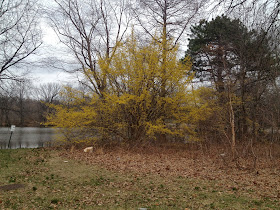

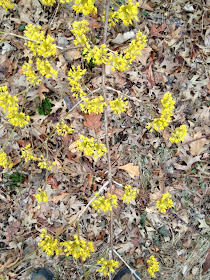









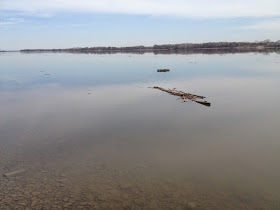















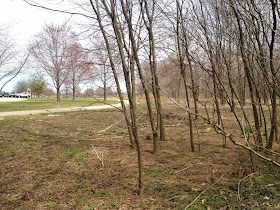


































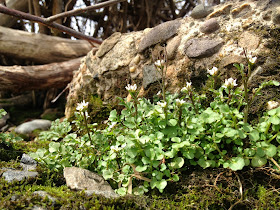

This is beautiful, and how people are utilzing and preserving it is even more beautiful. I long to see these places personally. Its not everyday you get to appreciate nature.
ReplyDeleteFor improving your chances of gaining you need to go with this solution so that you could be in great deal. buy usa likes
ReplyDeleteThis comment has been removed by the author.
ReplyDelete